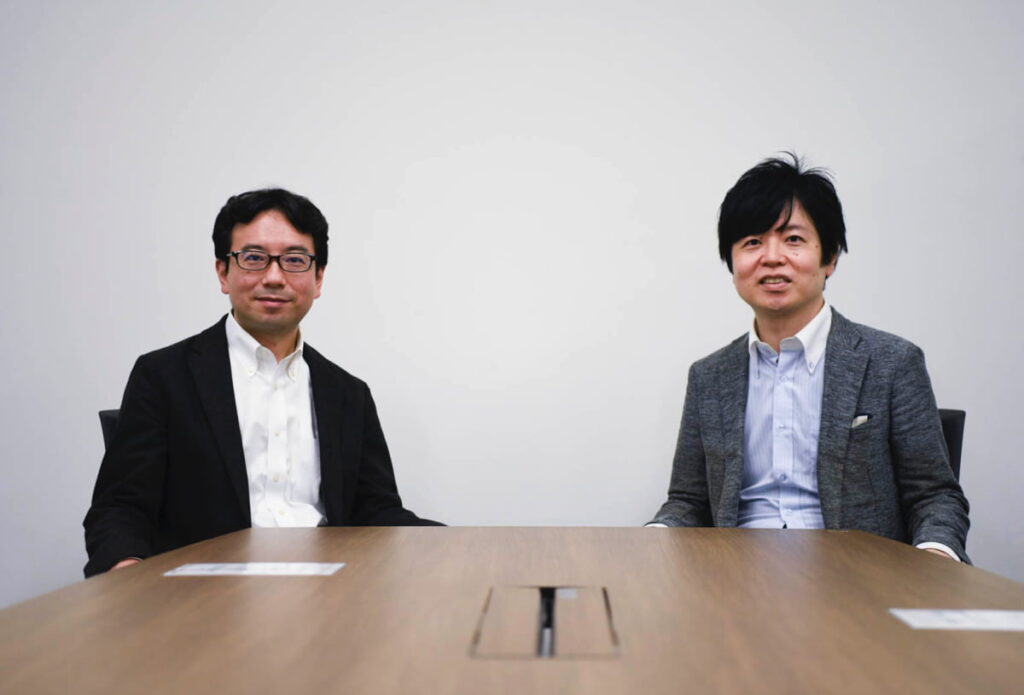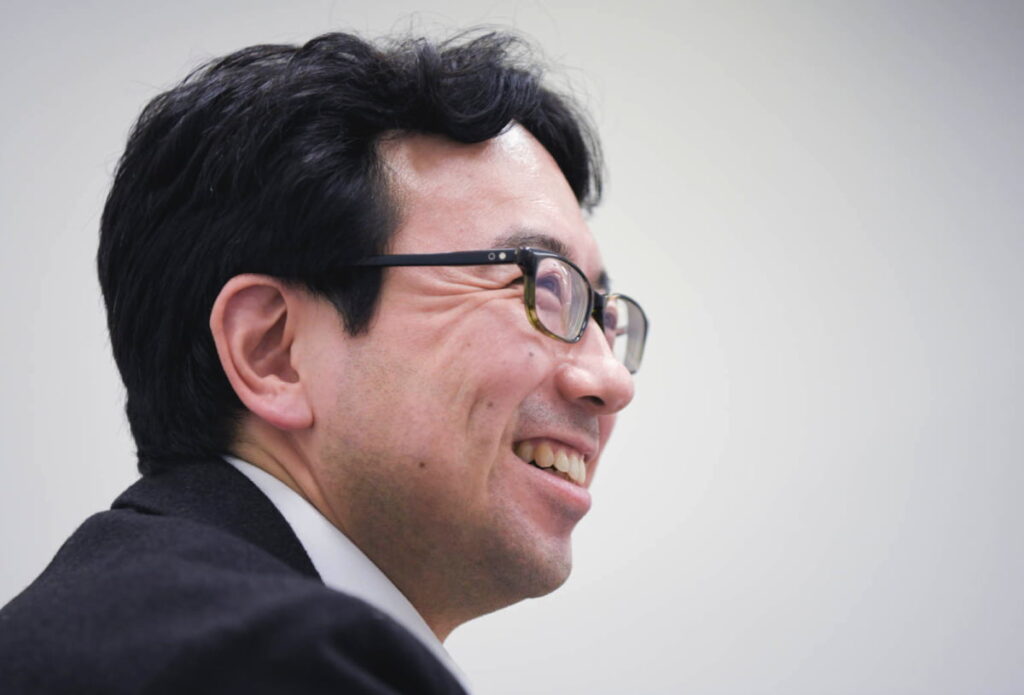Dialogue between Nikon CeLL innovation Co., Ltd. President Toshiyuki Nakayama and Shin Hatou

Hatou In 2015, I founded Cellusion. In the early stages of R&D, we were creating CECSi cells, corneal endothelial cell substitute from iPSC in the laboratory. Once the therapeutic effects were confirmed, we began to develop a plan for clinical studies and trials and eventual commercialization of the technology.
Initially, we planned to produce CECSi cells to be administered to humans for clinical research at the Keio University Hospital Cell Processing Center (KHCPC). However, since it was difficult to commercialize the products at academic KHCPC, we needed to partner with a Contract Development and Manufacturing Organization (CDMO) and develop the products while transferring the technology to them. Therefore, we approached Nikon CeLL Innovation (NCLi).
We chose NCLi because of the concrete details of your proposal. We also evaluated NCLi because of your high level of technology and the reliability of your answers to our questions regarding timelines. In addition, you answered our detailed technical questions, such as how to prepare reagents and deal with powder.
Nakayama We are very honored to receive this compliment. We have built and operated a GCTP/GMP-compliant production facility and provide the highest level of services in cell production, quality assurance, and quality control. We have also entered into a strategic business alliance agreement with Lonza, the world’s largest CDMO in the contract cell production market. The organization has over 20 years of experience in process development and manufacturing, and a track record of working with major regulatory authorities around the world. While many people associate Nikon with cameras, NCLi, a subsidiary of Nikon, has been steadily increasing our experience as a CDMO since we were established in 2015. Therefore, when we presented our proposal to Cellusion, we did not simply lay out a timeline. Rather, we made concrete proposals regarding how each stage connects to one another and the meaning of the actions we were to take.
Hatou We visited the facility to see how large it was and to what extent we could conduct experiments and manufacture products in parallel. At the time, some parts of the facility were not yet operational.
Nakayama The space was big, and there was enough room for future expansion. The Shinsuna Plant in Koto-ku, Tokyo, has a total area of over 7,500 square meters, making it one of the largest facilities in Japan for producing cell-based pharmaceuticals. The facility was designed to handle not only clinical trials but also commercial production and aseptic filling.
Hatou Compared to other facilities we saw, this was the most spacious facility, with clear flow lines. It was reassuring.
Nakayama The reason we emphasize space is that we are considering not only clinical trials but also commercialization. We need a certain amount of space for operations with potential commercialization in mind.
As you mentioned, we are also particular about flow lines; the flow of people, raw materials, consumables, and waste, as well as the flow and isolation of products, which have been studied in detail. Various pieces of production equipment in the clean room are monitored 24 hours a day, 365 days a year. Production equipment is connected to an uninterruptible power supply and an emergency generator to handle unexpected power outages.

Nakayama Since we designed the facility to handle research through commercialization, we can expand our facilities while customizing them according to Cellusion’s pipeline. You can rely on us until we are at the stage where we can efficiently manufacture your products.
Hatou It was important for us to have room for future expansion and to be able to respond when production volume increases. I am relieved that we share the goal of commercializing the product and delivering it to patients globally.
In the field of regenerative medicine, the development of manufacturing methods is a key factor in bringing seeds from university laboratories to the commercial market. We are working to share knowledge, transfer basic science technology, and share information while conducting R&D at Keio University and Cellusion’s laboratories.
Our first main goal is to start Cellusion-sponsored clinical trials following manufacturing in compliance with GMP standards. We will then build a system that enables us to mass produce and commercialize the product for patients. There are several obstacles, but we would like to proceed while maintaining close communication.
Nakayama I agree that the key to regenerative medicines lies in how products are manufactured. Much of the detailed knowledge and expertise required concerns how to upscale while maintaining the quality of pharmaceutical products. The world has high expectations for the regenerative medicines that you are working to develop. I am happy to be a part of the team that is taking on the challenge of addressing unmet medical needs in Japan.
Hatou While intellectual property, patents, and scientific background data are important, it is more our subtle know-how that differentiates us from our competitors when it comes to manufacturing. I believe that by accumulating such know-how, we will be able to create products that others cannot imitate in terms of quality and production volume.
Regenerative medicine is becoming popular in the USA and Europe. Cellusion will develop regenerative medicine products from a global perspective, rather than limiting our efforts to Japan. What is required is that we meet the requirements of patients worldwide while maintaining the quality of our products. This is an important part of ensuring that Japanese regenerative medicine products are in demand around the world.
Nakayama Our company was founded with the vision of becoming an infrastructure for regenerative medicine in Japan. As a company that supports regenerative medicine, we are committed to working closely with Cellusion.
Hatou The fields of regenerative medicine and cell therapy have the potential to become key industries in Japan in the future. I hope that Cellusion will play a central role, and I look forward to your continued support.

This dialogue took place in August 2022. The contents of the publication are based on the information at the time of the interview.

